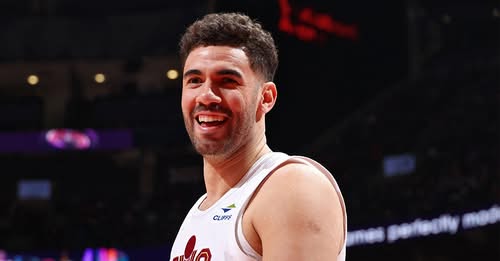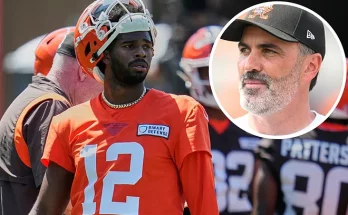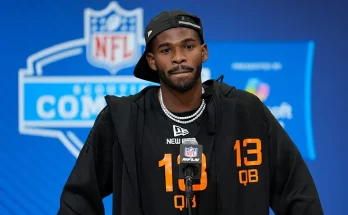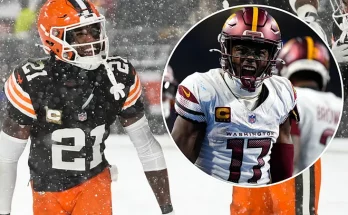The NBA is full of flashy nicknames, highlight reels, and bombastic personalities, but sometimes, the heart of the league rests in its most grounded figures. Among them is Georges Niang—affectionately dubbed “The Minivan”—a nickname that perfectly encapsulates his unassuming exterior paired with relentless efficiency. Now, in a move that has fans reminiscing and opponents raising their eyebrows, “The Minivan” is headed back home, returning to the Utah Jazz after several seasons of grinding across multiple NBA franchises. It’s not just a feel-good story—it’s a basketball one, layered with grit, loyalty, growth, and an unshakable belief in being more than the sum of your parts.
Niang’s return to Utah is not some nostalgic footnote buried at the end of an offseason report—it’s a strategic shift and an emotional reconnection. During his first stint with the Jazz from 2017 to 2021, Niang carved out a place not just in the rotation but in the hearts of fans and teammates alike. Originally signed as a two-way player after bouncing between the Indiana Pacers and the G-League, he worked relentlessly to earn a spot on Utah’s roster. By the time he left for Philadelphia in 2021, he wasn’t just another guy on the bench—he was a trusted floor-spacer, locker room leader, and cultural cornerstone.
Nicknames in the NBA are often grandiose: “The King,” “The Beard,” “The Greek Freak.” And then there’s “The Minivan,” a moniker Niang embraced during his time in Utah, coining it to reflect his self-awareness. He wasn’t flashy like a sports car, but dependable, tough, and surprisingly powerful under the hood. It’s the kind of metaphor that only works because it mirrors Niang’s journey—never the highest draft pick, never the fastest guy on the court, but always moving forward with purpose. In that sense, his return isn’t just symbolic—it’s timely.
The Jazz aren’t the same team they were when Niang left. The Donovan Mitchell and Rudy Gobert era has ended, and Utah now finds itself in a reshaping phase—one foot in youth development and another in chasing competitiveness in a ruthless Western Conference. That’s precisely why Niang’s return is so valuable. Utah’s front office, led by Danny Ainge and Justin Zanik, understands that rebuilding isn’t just about collecting young talent and draft picks—it’s about maintaining continuity, culture, and effort. Niang brings all three.
Over the past few seasons, Niang has refined his game and solidified his reputation as one of the league’s most reliable role players. With the Philadelphia 76ers, he became a key piece in their rotation, spacing the floor for Joel Embiid and James Harden, often knocking down timely three-pointers while guarding bigger wings and forwards on the other end. His toughness was on full display in playoff series, where he never shied away from physical battles or mental warfare. Most recently with the Cleveland Cavaliers, Niang provided much-needed veteran presence and kept defenses honest whenever he was stationed on the perimeter. His shooting stroke, court awareness, and ability to play multiple positions made him a valuable asset in every locker room he entered.
Yet, there was always a sense that Utah was his basketball “home.” This wasn’t just about his production on the court—it was about his impact off of it. Fans remember his community involvement, hilarious interviews, and camaraderie with teammates like Joe Ingles, Donovan Mitchell, and Rudy Gobert. He wasn’t just part of the roster—he was part of the fabric. And when he left, it felt like the end of a quietly special chapter in Jazz history.
Now, that chapter gets a sequel.
His return comes at a critical time for Utah. With a promising young core that includes Keyonte George, Taylor Hendricks, and Walker Kessler, the Jazz are loaded with potential but still lack steady veterans who know what it means to be part of a winning system. Niang offers just that—leadership by example, communication on defense, spacing on offense, and an unwavering competitive spirit. He’s not coming back to be the star; he’s coming back to be the glue, the connective tissue between the old and the new.
On the court, Niang provides head coach Will Hardy with a Swiss army knife option in the forward position. His ability to stretch the floor will help create lanes for Utah’s slashers, and his experience defending multiple positions will be critical for a team still learning how to switch and rotate at the NBA level. While he’s unlikely to log 30 minutes a night, his presence will be felt in every possession he’s on the floor—and probably even louder from the bench. His energy has always been infectious, and in a long 82-game grind, that matters more than people realize.
For Niang, this return isn’t about sentimentality—it’s about unfinished business. During his first tenure with the Jazz, the team made the playoffs multiple times but never broke through to the conference finals. While he played his role to perfection, the ceiling for that team always felt just a few inches too high. Coming back, he’s not here to chase personal stats—he’s here to help a young team learn how to win and to see if perhaps the second ride in the Minivan leads to a deeper playoff push than the first.
It’s also a message to every underdog out there: you don’t have to be the most athletic or the most hyped to make a real impact. You just have to know who you are, master your role, and stay ready. That’s what Niang has done his entire career. From being waived, to G-League stints, to playoff battles on elite teams—he’s never stopped grinding. That mentality will rub off on the Jazz’s young roster, many of whom are still figuring out how to turn potential into production.
Beyond the hardwood, Niang’s return brings back a fan favorite who always had a deep connection with the community. In a market like Salt Lake City, where the team and the city are deeply intertwined, having someone like Niang—a player who embraces the city as much as the team—is priceless. Expect him to be visible at community events, vocal in postgame interviews, and vibrant on social media, continuing the bond he never really severed in the first place.
For the Jazz organization, bringing Niang back signals a commitment to building a winning culture, not just a winning roster. They’re saying that character, professionalism, and identity matter. In a league increasingly dominated by star-chasing and transactional thinking, Utah is taking a different approach—one rooted in chemistry, values, and sustainability. Niang is the embodiment of that.
And for the fans? It’s like welcoming back a family member who went off to do big things but never forgot where he came from. There’s a sense of closure, yes, but also excitement. Because this time around, “The Minivan” is more experienced, more confident, and just as dependable. He’s not just returning to reminisce—he’s returning to elevate.
The NBA may be obsessed with youth, vertical leaps, and viral clips, but sometimes, what a team really needs is the grounded presence of someone who knows how to win, knows how to lose, and knows how to get back up. Georges Niang is that guy. He may not light up the scoreboard every night, but he lights up the room. He may not have the flash of a Tesla, but when the playoff roads get bumpy, everyone’s grateful for the Minivan.
As the 2025-26 NBA season approaches, Utah fans have more than rookies and draft picks to be excited about. They have a returning hero, a fan favorite, a steady hand in a stormy league. “The Minivan” is back in the garage, and just like before, he’s ready to roll.



